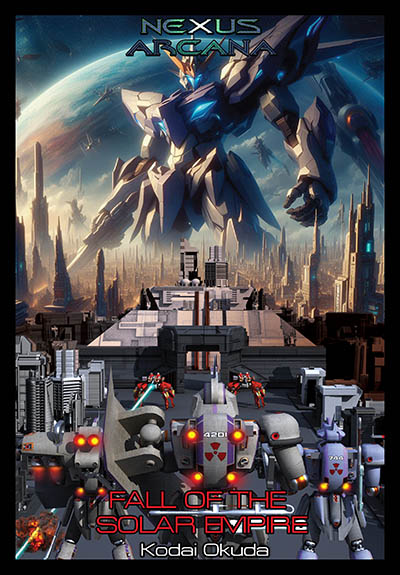Railguns, Coilguns, and Gauss Weaponry
by , 10-21-2011 at 07:02 AM (133067 Views)
INTRODUCTION
Within the world of Nexus Arcana there are numerous types of armaments. Among these are a family of electromagnetic mass drivers collectively called Gauss Weapons.
Gauss weapons, named after Carl Friederich Gauss, generally came in two types during late 20th and early 21st Centuries. Coilguns, and railguns were the two different approaches to the electromagnetically propelled projectile concepts. This pair of mass driver techniques were rather straightforward designs and the basic operation of each was reflected in their namesakes.
Friederich Gauss:
COILGUN TECHNOLOGY
The coilgun uses a series of electromagnetic coils as a barrel for the weapon and a ferromagnetic material projectile at the firing gate/breech of the "barrel." Once energized with a large electric current the electromagnetic field of each of the coils "pulls" the ferromagnetic slug/flachette toward the muzzle at increasing greater speeds. This technology had considerable drawbacks due to the energy consumption required to fire each shot and was not conducive to the production of small arms. However, coilgun based Gauss weapons were used on surface warships, tanks, and some aircraft during the 2020s.
Example of the Coilgun:
RAILGUN TECHNOLOGY
Railgun technology is based on a positive and negative "rail" on either side of a barrel housing that pulls an armature down the barrel at hypervelocity as heavy electrical current moves down the positive rail, through the armature and into the negative rail. The armature, and its sabot, are discharged at the end of the barrel at thousands of miles per hour without the use of propellants or chamber pressures from combustion materials.

The US navy helped pioneer this technology during the late twentieth century for use on their surface warships as a replacement for conventional cannon.
Navy test of a prototype railgun:
While useful on warships, and tanks, railgun weaponry consumed considerable power and was thus no better than the coilgun for use as a small arm. That changed during the 5th world war, more commonly called Asian-Pacific conflict.
POST-CYBERSTATE SOCIETY "RAILGUNS"
The Asian-Pacific conflict of the mid-2040s brought with it considerable innovation in pre-existing technologies that had yet to be refined. Among these were the various Gauss weapons tested for use against cyborgs in the last year of the war.
Modern Gauss weapons of the 2050s through 2070s used a hybrid of the coilgun/railgun Gauss weapon concepts and integrated them into what was officially known as a "Rapid-Acceleration-In-Line-gun" or RAILgun. However, the old name "railgun" came to symbolize this hybrid type of weapon in the 2050s due to GI's confusing the term with the older railgun systems used by naval and army forces of the United Nations.
Essentially the new RAILgun concept used a tubular "rail" system that was cut into two halves. This rail system propelled the ferromagnetic round down the barrel at hypervelocity, while a coil wrapped around the "barrel" created an electromagnetic vortex that caused the round to spin as if it were being fired out the barrel of a conventional rifled weapon and thus the sabot was stabilized for more accurate shots.
The first successful mass production railgun small arm weapon was the RR-51general purpose assault rifle produced by the United Nations for their armed forces. This weapon expressed a zenith in Gauss weapon design as it used both coilgun and railgun technologies very efficiently.
CUTAWAY OF RR-51
One of the innovations that the Cyberstate Society perfected was the High-Power Cobalt-Lithium-Ion battery system used in the ammunition of the RR-51 and subsequent Gauss weapons. The .40 caliber, 4 kilowatt, battery-cartridges used by the UN rail rifle contained the necessary electrical energy to allow the transformer on the inside top of the weapon to boost the power into the megawatt range and store it in the triple ultracapacitors in the bottom of the forearm. The "round" contained all the energy needed to fire the ferromagnetic projectile down the barrel at over 6700 feet per second, power the "recoil" battery and solenoid to kick out the old "shell," and load a new cartridge into the "chamber" to fire another round. The total time taken to perform this operation was 2/10s of a second.
The fast operation of the internal mechanism of the rail-rifle allowed the RR-51 to operate in a fully automatic firing mode much like its conventional propellant powered caseless counterparts of the era. While certainly an incredible weapon during the 2050s and 2060s, the RAILgun system was eventually replaced by energy weapons developed during the late 2060s and early 2070s.










 Email Blog Entry
Email Blog Entry

